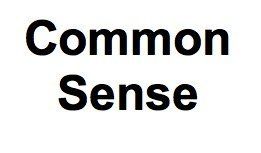More Women than Men Seeking Higher Education Nationwide, Including the Eastern Shore and Delaware

More women than men in the United States are now going to college, and have been for some time.
In a March 2022 article on the Federal Reserve Bank of St. Louis website, Oksana Leukhina and Amy Smaldone wrote that fall college enrollment figures reported almost twice as many women as men enrolling.
In 1970, as noted by Leukhina and Smaldone, men outnumbered women in college, accounting for 57% of enrollment in four-year institutions and 59% in two-year institutions. They suggest that at that time, more men were in college to avoid the Vietnam-era draft. By 1980, gender balance was reached in four-year institutions, while women outnumbered men in two-year schools. After 1980, gender imbalance steadily increased, with women dominating college enrollments.
Here is a brief look at the evolution of higher education on the Eastern Shore and in Delaware.
The oldest Eastern Shore college — and one of the oldest in the nation — is Washington College in Chestertown. Founded in 1782, for its first century, the college admitted only men. Women were admitted in 1891, mostly in the “normal” department to become teachers.
The oldest institution of higher education in Delaware is the University of Delaware, in Newark. Founded in 1743 as a free school in Pennsylvania, the school moved to Newark in 1765. The school was incorporated as Newark College in 1833 and granted the power to confer degrees. Like Washington College, the college enrolled only men early on. Newark College was renamed the University of Delaware in 1921, and became coeducational in 1945, after it merged with the Women’s College of Delaware.

The other Eastern Shore and Delaware colleges admitted women from the start. University of Maryland, Eastern Shore, was established in 1886 by the Delaware Conference of the Methodist Episcopal Church to educate African Americans. In 1900, it was named Princess Anne Academy. After passing from church control to state ownership. in 1948, it was named Maryland State College, and achieved university status in 1970.
Salisbury University began in 1925 as a “normal” school to prepare public school teachers with a two-year program. In 1931, it was increased to a three-year curriculum, and in 1934, was renamed Maryland State Teachers College. The four-year curriculum came in 1935. In 1947 and in 1960, more programs in the arts and sciences were introduced. In 1963, the college was renamed as Salisbury State College, and became Salisbury University in 2001.

Delaware State University was established in Dover in 1891 as the Delaware College for Colored Students. In 1949, it became Delaware State College, and received its current name in 1993.

There are three community colleges on the Eastern Shore. Chesapeake College was founded in 1965 to serve the Upper Eastern Shore. Wor-Wic College was founded 10 years later to serve the the lower Eastern Shore. Cecil College in Elkton started in 1968.


For purposes of comparison nationwide, 56% of students enrolling in college in the same year were women. With regard to graduating students, Jessica Bryant in a July 8, 2022 article (“Women Continue to Outnumber Men in College Completion”) noted that of two million bachelor’s degrees conferred in the U.S. during the 2019-2020 academic year, 58% were received by women.
How is this trend explained? Leukhina and Smaldone suggest that:
- Girls increasingly outperform boys at the high school level.
- Girls recognize that more education is one way of closing the gender pay gap.
A study in “The Feed” by Georgetown University in September 2021 indicates that women have made up the majority of college enrollments for four decades.
The article cites Kevin Carey, who wrote in the New York Times that “there are still some good-paying jobs available to men without college credentials,” whereas “there are relatively few for such women.”
Carey directs the Education Policy Program at New America (formerly the New America Foundation). He thinks that men who graduate from college are more likely than women to end up in high-paying fields. The biggest problem, he says, is in the decline in male attendance at two-year colleges, which he calls a “calamity.”
In an article for Pew Research in November 2021, Kim Parker reports that the educational gains by women are parallel to their greater participation in the labor force. These gains are also related to structural changes in the economy.
Forty-two percent of men and women who did not complete college degrees attribute it to cost. Thirty-six percent attribute their decision to not enroll or to drop out to the need to work to help support their family. Men are more likely than women to attribute their decision to factors related to personal choice. Thirty-four percent explain their decision by saying they just didn’t want to continue to study beyond high school. Non-college-educated men are more likely than women to give as their reason for not getting a degree that they didn’t need more education for the job or career they wanted (26% of men; 20% of women).
Finally, it seems that men, more than women, do not see the need for a college education to achieve their life goals. Women, on the other hand, think that the college degree will give them more opportunities in the job market. The cost of a college education is a factor for both. That may be mitigated for women because their high school performance record may make them more eligible for financial aid.
NOTE: I recommend that anyone who would like to dig more deeply into the gender disparity in education and the workplace read the “Falling Behind, What’s the Matter with Men?” by Idrees Kahloon in the January 20, 2023, edition of the New Yorker.
Additional Source:
Washington, the College at Chester, Chestertown: the Literary House Press of Washington College, 2000.
A native of Wicomico County, George Shivers holds a doctorate from the University of Maryland and taught in the Foreign Language Dept. of Washington College for 38 years before retiring in 2007. He is also very interested in the history and culture of the Eastern Shore, African American history in particular.
Common Sense for the Eastern Shore







